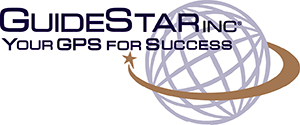 Thousands of books about leadership and organizational culture exist. Many profess to offer a “silver bullet” that will help leaders raise performance and solve their deepest organizational problems. Despite what appear as “new” notions, many ideas are variations on existing themes.
Thousands of books about leadership and organizational culture exist. Many profess to offer a “silver bullet” that will help leaders raise performance and solve their deepest organizational problems. Despite what appear as “new” notions, many ideas are variations on existing themes.
Thompson, Benedetto, and Walter[i] investigated eight “best practice” organizations through extensive qualitative research that used ethnographic, narrative inquiry, and case study methods and interviewed nearly 300 founders, leaders, employees, customers, and suppliers. They discovered that having the right leadership and the right culture were important but not sufficient factors for organizational success.
What they found instead were eight high-performing organizations that went beyond simply engaging employees. They found companies where delighted customers, increased efficiencies and productivity, and superior employee and customer satisfaction were the norm.
Are Engaged Employees a Thing of the Past?
Ten years ago, the literature and practice emphasized emotional engagement as a means to achieve loyalty and repeat business from satisfied customers (Buchanan, 2004), yet increasing evidence in professional journals and LinkedIn posts since the COVID pandemic have shown far less than optimal performance in many organizations. Mental well-being has been at the forefront, with first “Quiet Quitting” and more recently “Quiet Cracking.”
“Quiet Quitting” exists where employees simply become disengaged and contribute less than 50% of their effort toward work at hand, but “Quiet Cracking” is more problematic since it indicates burnout and total disengagement from one’s work. Despite the pandemic, the high-performing organizations the authors investigated have transcended these challenges with continued strong performance. How have they done this?
Engagement is Merely the Starting Point
Buchanan[ii] defined employee engagement as “the extent to which workers commit themselves to something or someone in their organization” (p. 19) and described two types of commitment: Rational commitment exists when a job serves an employee’s financial, developmental, or professional self-interest versus Emotional commitment where a worker values, enjoys, and believes in what they do. Buchanan noted that increased commitment can yield a 57% improvement in discretionary effort, i.e., the willingness to exceed duty’s call, with an improvement of 20% in individual performance and an 87% reduction in the desire to leave, but these increases are NOT the result of higher pay or benefits, but stem from:
- Letting employees know how important they are to business success.
- Giving employees multiple opportunities to contribute.
- Helping employees believe in their worth/value as well as the credibility of the organization.
These results are consistent with Herzberg’s classic Motivation and Hygiene factors[iii] yet more recent events and current Gallup data[iv] indicate that only 31% of US employees are “engaged” within their workplaces. The converse statistic is more troublesome: Over two-thirds of employees are disengaged-a disastrous statistic to say the least!
“Best Practice” Organizations Do More than Empower Employees
During the comprehensive qualitative research that preceded the publication of It’s My Company TOO!,[v] the authors discovered consistent common features within the eight innovative, “best practice” organizations in their study. Employees:
- Saw each encounter with a stakeholder as the only opportunity to make a positive impression; they did not wait for second chances.
- Interlaced all aspects of life with their quest for personal and organizational “gold.”
- Focused each decision, both in and outside of the workplace, on gaining the best possible result or outcome.
- Used their “discretionary thinking” freely to solve difficult challenges and did not limit their mental energies to artificial constraints such as the time spent in the office or on the job.
They also found a level of positive tension within “best practice” companies. Tension, which can be either positive or negative, is the act of “being stretched or strained, a state of mental unrest that seeks resolution and reduction of the psychological and physiological stresses that arise from the tension” (Thompson et al., p. 3). Within “best practice” organizations, leaders recognized that tension:
- Exists between the present and the future, between “what is” and “what could be,” which drives individuals, teams, and organizations to achieve better results.
- Occurs in the vacuum between the past and future.
- Requires the collective efforts of many people joined by a common purpose or goal.
- Is a positive force within organizations.
Leaders of “best practice” organizations leverage this positive tension for the benefit of all stakeholders: employees, customers, suppliers, and communities served.
High Performers Create Entangled Cultures
Think of each employee as a single wire within a company. How strong is he or she when standing alone? What if you wound all those individual wires together and compressed them, binding them so tightly like a suspension bridge cable to be capable of supporting millions of tons that cross that bridge daily. Employee engagement is like those individual wires, with INDIVIDUAL decisions to act in certain ways, but “entanglement” is like that huge suspension cable, with employees so tightly bound together and aligned on organizational purpose that the strength of their collective performance is almost incalculable. That’s what entanglement looks like.
Entanglement is a CULTURAL PHENOMENON that leaders of high-performing organizations see as “the critical force that separates world-class from common performance, providing an organizational competency that makes leaders among peers” (Thompson et al, p. 3). The eight entangled organizations described in detail by Thompson et al. span multiple industries-Construction, project management, manufacturing, distribution, service, non-profit community service and health care. They range in size from less than 50 to several thousand employees or associates. Despite this range, all eight shared the following features:
- Brilliant leadership and a leadership system to create an exciting workplace.
- Leaders merged discretionary thinking with the best of what employees have to offer.
- Entangled employees at all levels addressed problems that others face and achieved outcomes others aspire to but fall short in execution.
- Positive caring and the desire to do the job right every time.
The following eight critical components[vi] exist within entangled cultures, as evident within the “best practice” organizations studied:
- Having leaders at all levels who do extraordinary things.
- Building an ethical organization as core.
- Focusing all Human Capital on purpose.
- Using processes guide daily performance.
- Increasing Self-efficacy by building it into design.
- Giving employees freedom and responsibility within a culture of discipline.
- Hardwiring discretionary thinking and actions.
- Guiding the transformation to remarkable performance.
The effectiveness of the entangled culture stems from more than simply the eight components. The “magic sauce” exists within the synergy between and among the components, and the sauce is seasoned as each component is added and strengthened through continuous practice. Synergy creates magnetism that attracts others who are similarly energized. Shared values and visionary servant leadership are foundations to this culture, where the nexus of Leadership, Knowledge, and Execution reaches its zenith and all organizational elements are working in total harmony.
The Leadership System Through Which Entangled Cultures Emerge
The Leadership System[vii] within an Entangled Culture is built on core behaviors and actions that continually set the example for all leaders at all levels. These behaviors and actions need to be consistent across the enterprise because they are core to Performance Excellence and creating an Entangled Culture. When practiced as an integrated whole, they lead to Performance Excellence and breakthrough results that make competitors irrelevant.
Leader Behaviors include:
- Creating a positive, respectful, and ethical culture.
- Walking the talk.
- Knowing and leading people, NOT managing them, which includes guiding, coaching, and collaborating with them.
- Reinforcing good things you see as well as the ideas and the person(s) offering them, each of which is special.
- Supporting mature, discretionary decision-making.
- Focusing on correction and improvement, not finding blame.
Leader Actions operate at the strategic, operational, and grassroots levels of the organization. The following actions are specific to each level:
- Strategic Leadership
- Define and model core values.
- Create a well-defined mission and inspiring vision.
- Define, build, develop, and protect the Culture.
- Operational Leadership
- Reinforce and Model the Culture, especially Core Values.
- Hire the right people.
- Train, develop, and give employees the freedom to act with mutual accountability.
- Establish Key Performance Indicators (KPIs) for key strategies.
- Define unit, team, and individual performance expectations using KPIs.
- Define processes for discretionary thinking.
- Assess processes for effectiveness.
- Recognize performance AND effort.
- Grassroots Leadership
- Learn and live the Culture, especially Core Values.
- Consistently perform within the Culture of Discipline and exercise freedom with mutual accountability
- Fulfill expectations for unit, team, and individual performance.
- Exercise “Line of Sight” between individual daily efforts and the Organization’s Purpose.
Entangled Organizations employ positive tension between internal expectations for excellence and the entwinement of personal and organizational values that synergistically drive continually better performance, outcomes, and sustainability. If interested in the detailed evidence-based research upon which this concept rests, see Chapter 9, “The Synergy and Magnetism of an Entangled Culture” in It’s My Company TOO! (2012, Greenleaf Book Press). You will find references and links to leadership and organizational behavior topics such as psychological capital, positive psychology, positive organizational scholarship, virtue ethics, transformational leadership, performance excellence and quality improvement.
[i] Thompson, K.R., Benedetto, R. L., & Walter, T. J. (2012, August 6). Presentation to the Academy of Management International Conference, Boston, MA, titled: The Entangled Organization: Moving beyond Employee Engagement.
[ii] Buchanan, L. (2004). The things they do for love. Harvard Business Review 82(12), 19-20.
[iii] Herzberg, F. (2003, January). One more time: How do you motivate employees? Harvard Business Review, 81(1), 87-96.
[iv] See https://www.gallup.com/394373/indicator-employee-engagement.aspx for the most recent statistics on US and Global Employee Engagement results.
[v] Thompson, K. R., Benedetto, R., L., & Walter, T. J. with Molly Meyer. (2013). It’s my company too! How entangled organizations move beyond employee engagement for remarkable results. Austin, TX; Greenleaf Book Group.
[vi] Benedetto, R., L., & Thompson, K. R. (2013, Winter). Creating an optimal culture: The emergence of the entangled organization. Employment Relations Today, DOI 10.1002/ert.21384, 13-19.
[vii] Walter, T. J., Benedetto, R. L., & Thompson, K. R. (2011). The Entangled Organization Model. All Rights Reserved.
